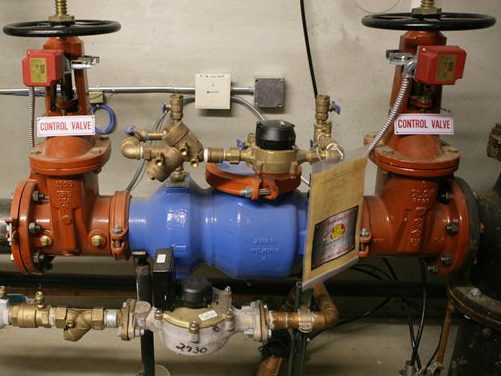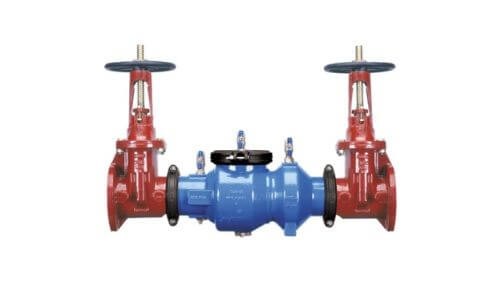Is It Necessary Conduct a Backflow Test on My Water
Is It Necessary Conduct a Backflow Test on My Water
Blog Article
Listed here in the next paragraph you will discover additional good quality material on the subject of Backflow Testing.

Yes, you need to backflow test your residence's water system to ensure that the water is devoid of toxins and dangerous degrees of chemicals. You need to not try to carry out backflow testing on your very own due to the fact that of the devices needed and room for mistake. We suggest that you call a professional plumber every number of years to check your water.
What is Backflow?
In short, heartburn is when water moves upwards-- the contrary instructions in the plumbing system. This is additionally referred to as "backpressure." When the water relocates this direction, it can combine with hazardous toxic substances and also pose a danger.
What Causes Backflow?
A regular cause of backflow is a loss of water pressure that causes the water to siphon back into the water system. An example is clearing out a paint container using a pipe. You fill up the paint container up with water, leaving the hose in the pail. After time, there is a loss in water pressure and the hose begins to suck the water back right into the water. As you can imagine, there are currently chemicals from the paint that are getting in the water, possibly positioning a hazard. Numerous people are not also conscious of backflow screening, however there are numerous factors why it's so essential.
Backflow Testing is Required by Law in Specific Cities
Depending on where you live, you could in fact be required by legislation to backflow examination your law. Iowa City keeps a document of all homes offered by the city's water supply.
You Can Prevent Backflow
If you have a specialist plumber set up a backflow device, unsafe heartburn is conveniently avoidable. If there is an energetic hazard, the plumber will certainly additionally check for backflow and figure out. The main purpose of a backflow gadget is to stop water from streaming backwards into your water. Plumbers install the tool on the pipes in your home to make sure that the water only flows in the appropriate instructions.
Backflow Can Impact Both You and Your City
Because unsafe heartburn can affect the public water supply in enhancement to a single structure, many cities establish heartburn guidelines. Contemporary cities have backflow devices in place that shield the water supply that comes from the majority of homes and industrial properties. The real risk originates from irrigation systems, which can hurt the water with hazardous fertilizers, manure, and other chemicals.
Call a Plumber to Test for Backflow Before It is Too Late
While it might appear grim, polluted water can cause awful bacterial and viral infections that are hard to treat. If there are any type of hazardous chemical levels, a plumbing business can quickly check your house's water to identify. If you can stay clear of the anguish that comes from drinking contaminated water, the small financial investment is. And also if you do discover that your water has high degrees of contaminants, a plumber can quickly mount a heartburn avoidance tool.
Yes, you need to backflow examination your house's water supply to guarantee that the water is totally free of toxic substances as well as dangerous levels of chemicals. A regular cause of heartburn is a loss of water pressure that causes the water to siphon back into the water supply. After some time, there is a loss in water stress and also the hose pipe starts to suck the water back right into the water supply. The main purpose of a backflow tool is to protect against water from flowing backwards into your water supply. Numerous cities establish heartburn standards due to the fact that harmful heartburn can impact the public water supply in addition to a single structure.
WHY DOES BACKFLOW TESTING NEED TO BE DONE EVERY YEAR
What Is Backflow?
Toxic gas backing up into a building is one example of potential backflow issues, but backflow can occur in many other ways.
Backflow is generally referred to as the reversal of a liquid or gas in a plumbing system.
Most issues for the public occur with backflow resulting in contaminated drinking water. If you look up backflow issues online you’ll probably find references to “potable” water. That means drinking water.
There have been backflow issues in the past with drinking water. Chemicals, sewage and other contaminants have found their way into drinking water causing health issues for those that count on the fresh water.
What Causes Backflow?
In a residence or commercial building water generally flows one way. This normal flow is usually driven by consistent pressure in the water and waste system.
Anything that changes the normal pressure in the system can lead to backflow.
Fire hydrant use or malfunction can reverse the normal pressure in the system on a city line, but backflow can occur in a number of different ways.
Sometimes backpressure might be caused by someone using a garden hose and submerging the end of the hose in a pool of liquid. If pressure is lost the flow could reverse and contaminants could be released into the drinking water.
Anytime there is a connection between contaminants and the drinking water there is potential for a backflow issue. Sometimes these connections are not immediately obvious like the garden hose connecting to a building’s drinking water supply.
Backflow Regulations
The Environmental Protection Agency (EPA) provides guidelines and regulations for state and local governments regarding backflow. State and local governments also have their own guidelines and regulations for backflow prevention.
Arizona has its own backflow regulations.
Due to issues with backflow in the past, regulations require backflow preventer devices to be used in nearly all residential and commercial buildings.
A backflow preventer is a device that prevents backflow as cross-connection points where potential backflow issues may occur.
While backflow is not a common occurrence, preventers are in place to make sure there is no contamination should something malfunction or go wrong with a building’s water supply.

I stumbled upon that blog entry about What is Backflow Testing? when perusing the internet. Liked our write up? Please share it. Help other people check it out. Thanks a lot for your time. Kindly check our site back soon.
Need fast action? Dial. Report this page